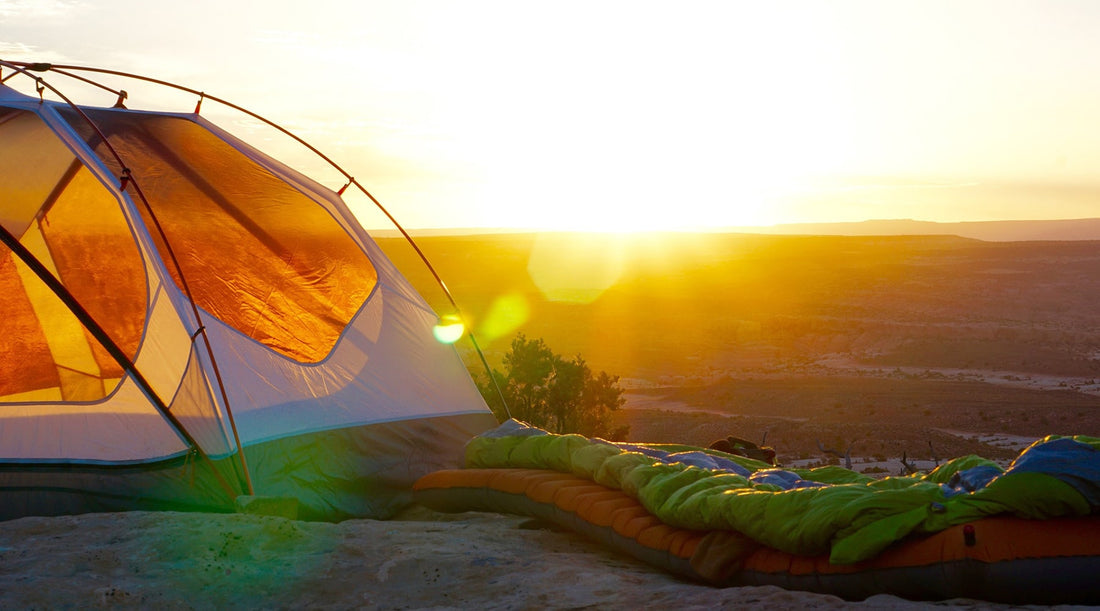Heading out on a wilderness backpacking trip involves meticulous planning, and one key aspect that often takes center stage is what's know as the big three.
These three components — backpack, sleep system, and shelter/tent — are the pillars of a backpacker's gear setup, significantly influencing comfort, weight, and overall outdoor experience.
Backpack: The Command Center of Your Journey
- Functionality and Fit: The backpack is not merely a vessel; it's your command center. Choosing a backpack that suits your needs is paramount. Consider factors such as capacity, organizational features, and accessibility. A well-fitted backpack distributes weight evenly, preventing discomfort and fatigue during long treks.
- Pack Weight: The weight of your backpack can impact your overall enjoyment. Opting for a lightweight yet durable backpack ensures that you're not weighed down by excess baggage, allowing you to cover more ground comfortably.
Sleep System: Ensuring Restful Nights in the Wilderness
- Shelter/Tent: Your shelter is your sanctuary in the wilderness. Tents, hammocks, tarps, and bivouac sacks are popular choices. Selecting the right shelter depends on personal preference, expected weather conditions, and the level of comfort you seek. Ensure your shelter is durable, weather-resistant, and suits the terrain you'll encounter.
- Sleeping Bag: A good night's sleep is crucial for an energized backpacking experience. Choose a sleeping bag with a temperature rating suitable for your destination. Down or synthetic insulation, shape (mummy or rectangular), and weight are factors to consider based on your preferences and the conditions you'll face.
- Sleeping Pad: Often overlooked, a quality sleeping pad adds insulation and comfort. It provides a barrier between you and the cold ground, preventing heat loss and enhancing your sleep quality. Lightweight, compact, and comfortable, the right sleeping pad is a game-changer.
Shelter/Tent: Finding Refuge in the Great Outdoors
- Importance of a Good Shelter: Your shelter is your haven, protecting you from the elements. Tents offer privacy and protection against rain and insects, while hammocks provide a unique, suspended experience. Tarps and bivouac sacks are minimalist options for those seeking simplicity and weight savings.
- Factors to Consider: Choose a shelter based on the anticipated conditions. A four-season tent offers robust protection against harsh weather, while a three-season tent balances weight and ventilation. Ultralight backpackers might favor minimalist shelters, emphasizing weight savings.
Why the Big Three Matter:
- Weight Considerations: The Big Three often constitute a significant portion of a backpacker's base weight—the weight of their gear, excluding consumables. Choosing lightweight options for the Big Three allows backpackers to cover more ground with less physical strain.
- Comfort and Safety: The right backpack, sleep system, and shelter enhance your comfort and safety in the outdoors. A well-fitted backpack prevents discomfort, a proper sleep system ensures restful nights, and a reliable shelter safeguards against the unpredictability of nature.
- Personalization: The Big Three are not one-size-fits-all. Personal preferences, the length of your journey, and the environmental conditions should dictate your choices. Customizing the Big Three to align with your needs and priorities is key to an enjoyable backpacking experience.
Conclusion:
The big three — backpack, sleep system, and shelter/tent — are the foundational elements that can make or break your hike. Each component plays a vital role in ensuring your comfort, safety, and overall enjoyment.
By understanding the significance of the big three and tailoring your choices to your unique preferences and the demands of your journey, you'll be well-equipped to embark on a backpacking expedition that's as lightweight as it is fulfilling.

